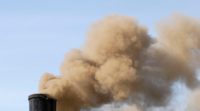Environmental groups are raising alarm about the consequences of using foam retardant to quell the enormous fire that raged for days at the International Terminals Co. (ITC) in Texas. Storage tanks that were ablaze at the chemical facility near the Deer Park facility contained gasoline blends, base oils, xylene, pyrolysis gasoline and naptha. The ITC fire crews that worked to extinguish it only managed to gain traction on the third day, even as the company shut off pipelines and equipment in order to reduce the risk of explosion.
Concerned about airborne exposure to benzene, many local residents sheltered in place and some schools canceled classes. Under a pall of dark smoke that spread over five counties, although officials assured the public that the fire posed no threat to health.
However, benzene isn’t the only toxic release that people should worry about, according to the Sierra Club, which is monitoring the situation.
PFAS in firefighting foam pollutes water
The 130,000+ gallons of toxic Class B firefighting foams used to combat the blaze contain PFAS – chemicals harmful to human health. Awareness of the presence – and danger – of PFAS in the nation’s waterways and drinking water systems has been steadily growing. The chemicals are classified as persistent; they cannot be broken down, and they remain in the environment indefinitely.
As a result of the ITC firefighting, says the Sierra Club, PFAS foams and other contaminants from the fire response are running off into the Houston Ship Channel, with local toxicologists and fishers expressing concern for the health of communities and ecosystems connected to the Ship Channel.
Sierra Club Dirty Fuels Gulf Coast Organizer Bryan Parras said his organization has issued issued recommendations for local and state governments to immediately contain the toxic run-off, test water samples for PFAS chemicals, and ensure pollution does not extend through the Ship Channel into the Bay.
A Hurricane Harvey comparison
“If these PFAS chemicals reach the Galveston Bay, they will contaminate fish stocks and sediments for centuries. Our health has already been compromised by this ongoing disaster; already more toxic chemicals have been released because of the ITC fire than were released in the second storm of pollution post-Hurricane Harvey.
“Now on top of that we’re learning that dangerous toxins are being released into our local waterways, toxins that can never be cleaned up once they are released.”



